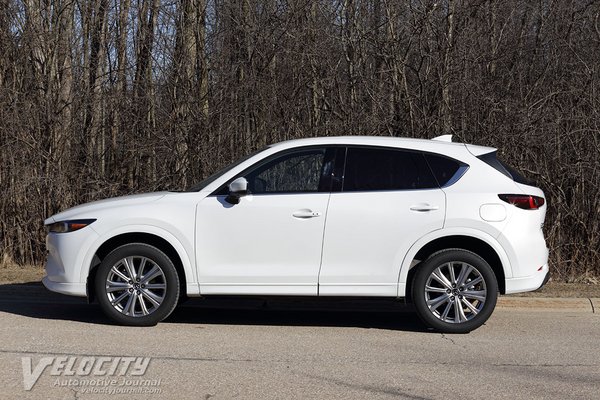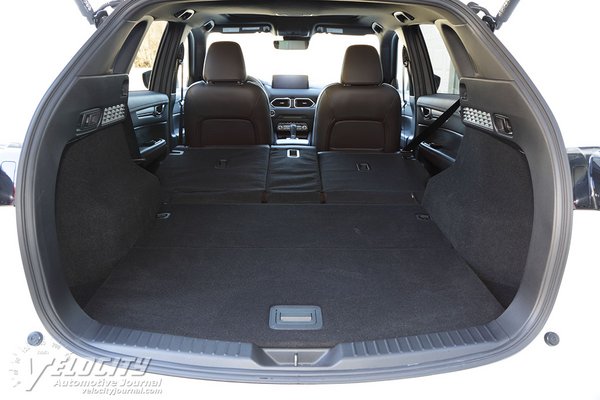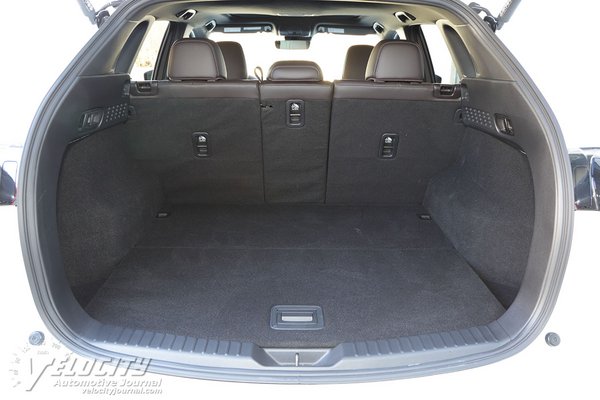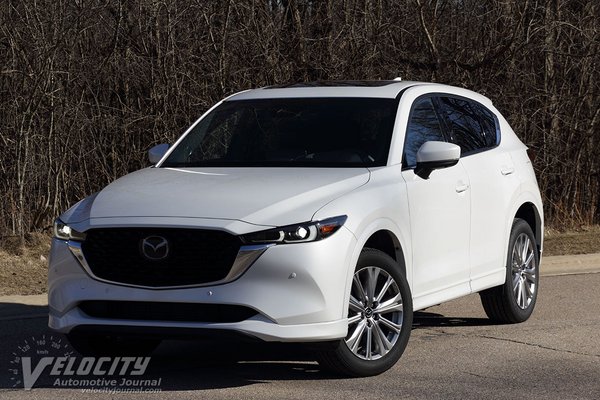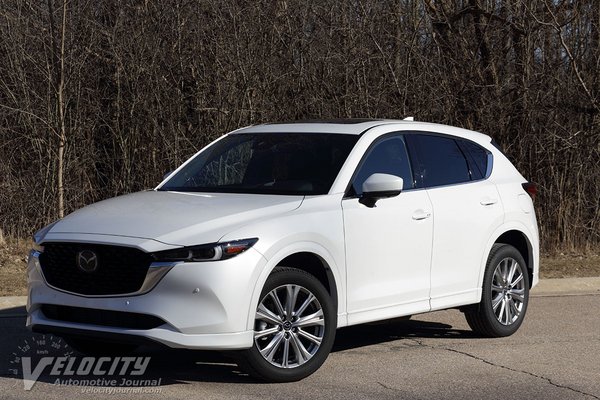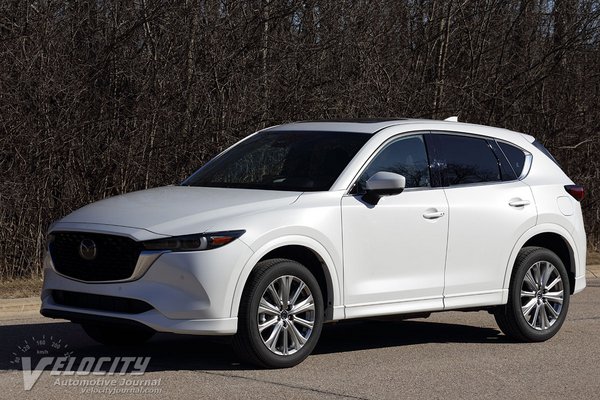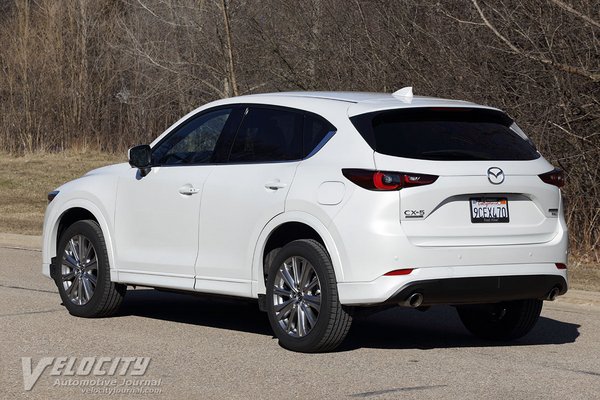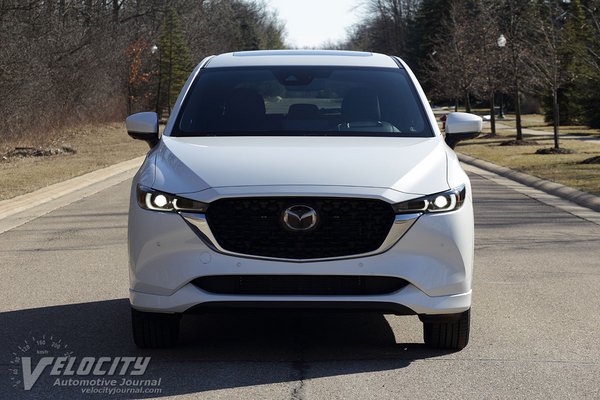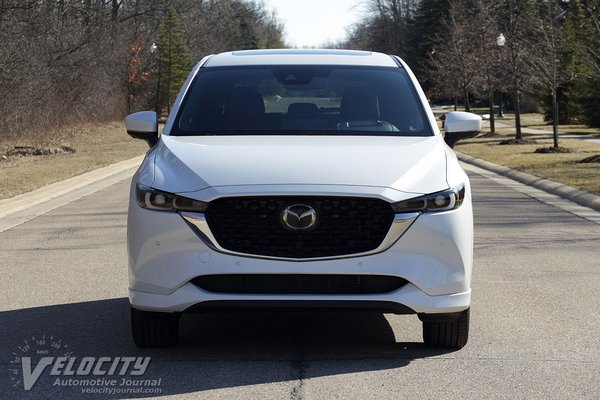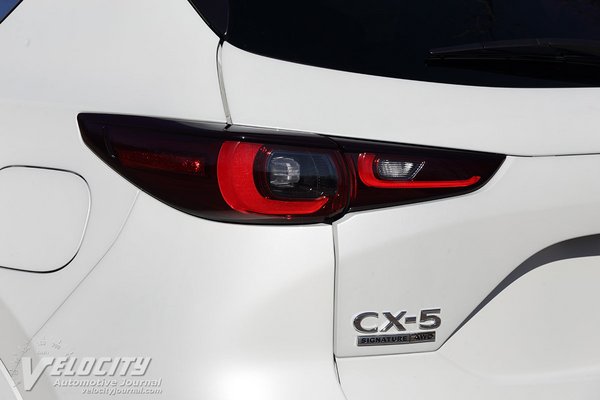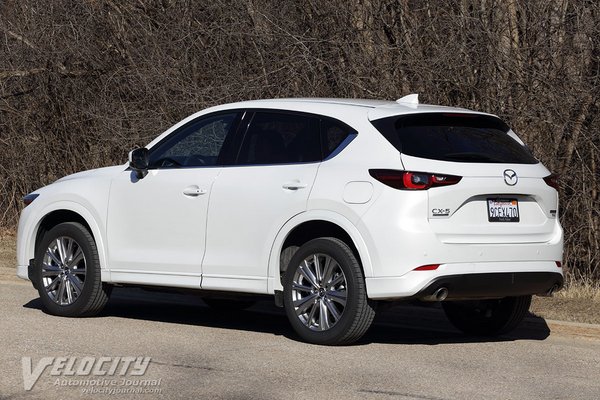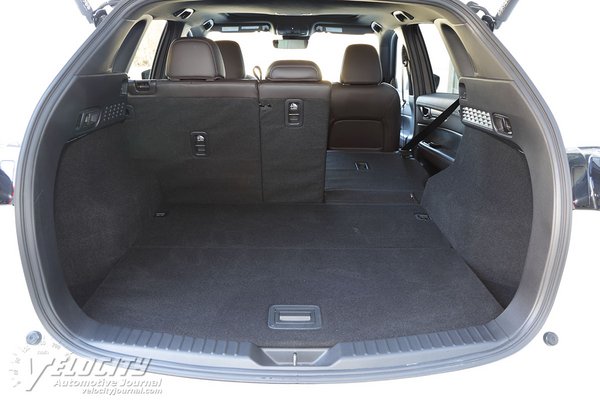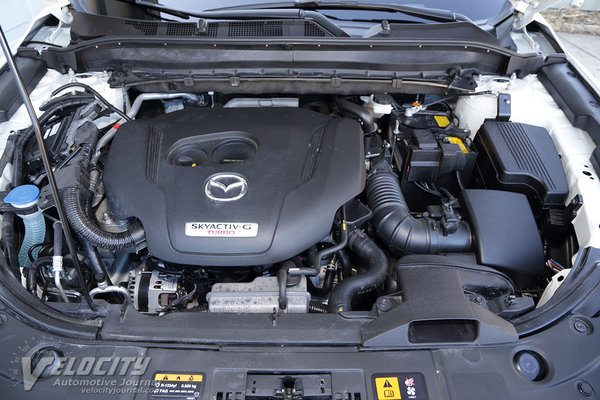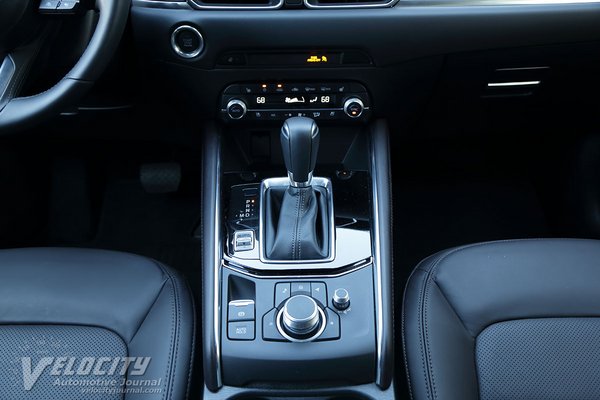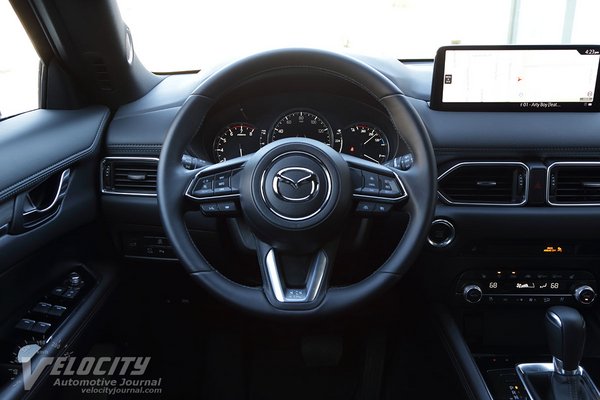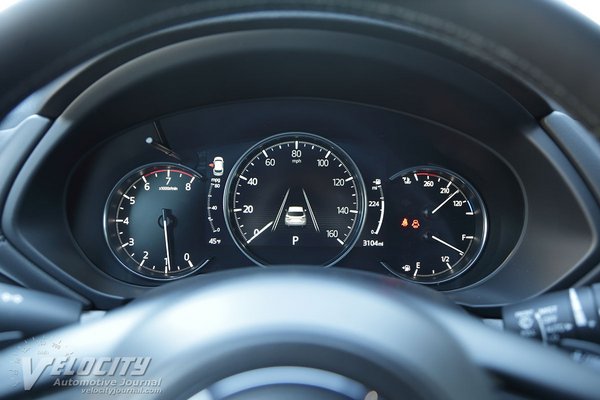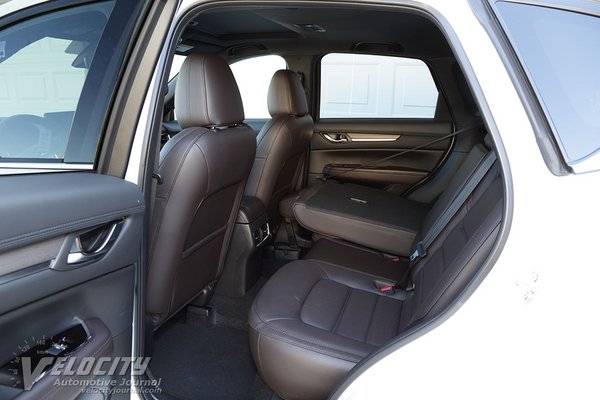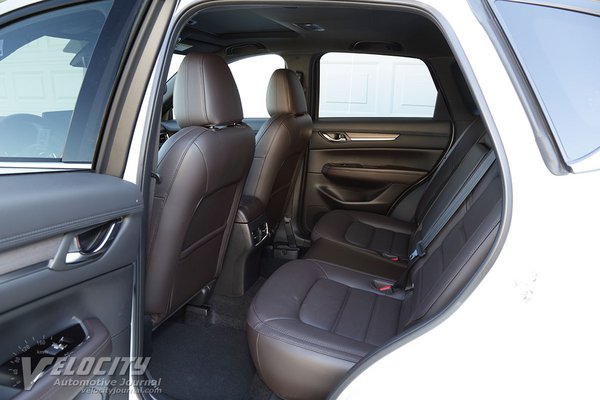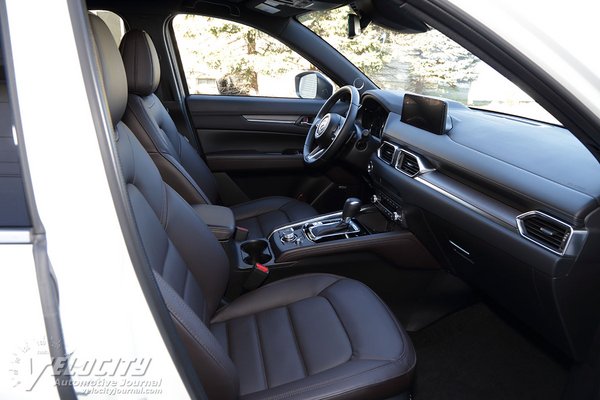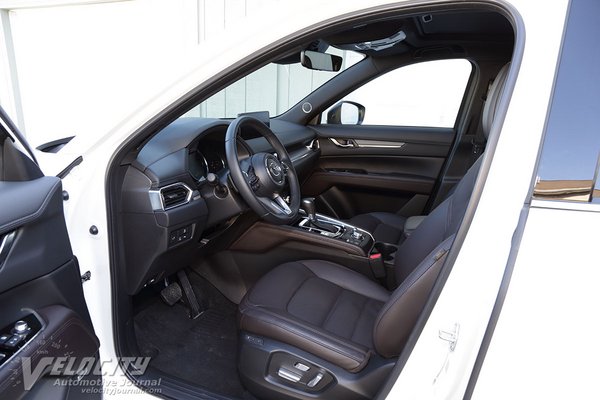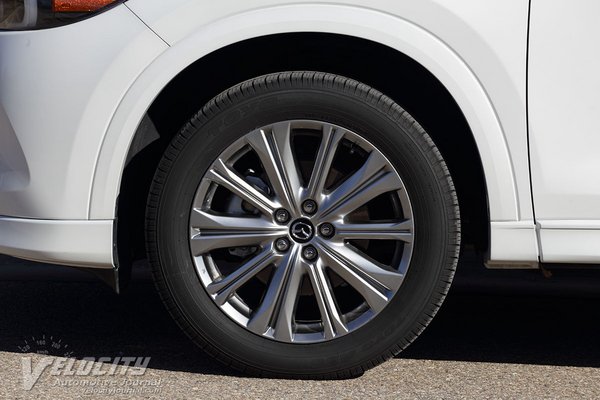2023 Mazda CX-5 Turbo Signature AWD
05/22/2023
Shahed Hussain
Compact SUVs are among the most popular vehicles in the America, and Mazda's CX-5 is aimed at the heart of the segment. Over the past ten years, Mazda has expanded its SUV range in the US to four models: CX-30, CX-5, CX-50 and CX-9. Although the CX-5 is the best-selling model in Mazda's lineup, some customers may prefer the similarly priced CX-50, a rival to the Subaru Outback. Eight variants of the CX-5 model are available, starting with the 2.5 S ($26,700) and ranging up to the 2.5 Turbo ($36,850) and 2.5 Turbo Signature ($39,650). All-wheel drive (AWD) is now standard on all CX-5s.
Our test vehicle was a 2023 CX-5 Turbo Signature AWD powered by the standard 2.5L turbo. The only options were the rhodium white metallic paint ($595), floormats ($165) and retractable cargo cover ($250). Including the $1,375 destination fee, the total added up to $42,035. As the top CX-5 in the lineup, the Signature's standard equipment list is extensive: Nappa leather seats, heated steering wheel, power heated and ventilated front seats, heated rear seats, wood trim, 19-in. alloy wheels, 10.25-in. infotainment display, navigation, head-up display, LED headlights, adaptive front headlights, moonroof, Bose audio system, Android Auto, and Apple CarPlay. Active safety technologies include: radar cruise control, city brake with pedestrian detection, lane departure warning, 360-deg. view monitor, and blind spot monitoring with rear cross-traffic alert.
Both the normally-aspirated 2.5L and the turbo are all-aluminum SKYACTIV-G engines with dual overhead-cams variable valve-timing and direct injection. The 2.5L inline-4 is rated at 187-bhp @ 5,700 RPM and 186 lb.-ft. @ 3,250 RPM. Opting for the turbo boosts power to 256-hp @ 5,000 RPM and torque to 320 lb.-ft. @ 2,500 RPM (using 93-octane fuel). Although both engines use 6-speed automatics, gear ratios are optimized for each powerplant. When coupled to the 2.5L turbo, both fifth (0.707:1) and sixth (0.600:1) gears are overdrive ratios mated to a 4.411:1 final drive. Mazda's i-Activ AWD system sends power to all four wheels. EPA fuel consumption for the 2.5L turbo/AWD powertrain is an estimated 22/27 MPG (city/hwy.). We averaged 22-23 MPG is mixed urban and highway driving.
Similar to other compact SUVs, the CX-5 front suspension uses MacPherson struts and a stabilizer bar. At the rear is a multilink design with coil springs, dampers and a stabilizer bar. The electrically-assisted rack-and-pinion steering system is geared for 2.7 turns lock-to-lock. Disc brakes are at all four wheels: 12.6-in. dia./11.9-in. dia. (F/R). Alloy wheels are standard on all models (17-in. or 19-in.). The Signature gets the larger 19-inch diameter alloy wheels, shod with Toyo A36 P225/55R19 all-season tires. Curb weight ranges from 3,552 lbs. (Sport FWD) up to 3,836 lbs. (Signature AWD). Tow rating is limited to 2,000 lbs. regardless of powertrain.
Mazda's interior design stands out for its premium materials; the CX-5 is one of the few SUVS in its class using aluminum trim throughout the cabin. Exclusive to the CX-5 Signature is wood veneer on the dash and door panels. The leather-wrapped steering wheel has integrated audio, phone and cruise control buttons. Paddles behind the steering wheel enable manual gear shifts. A central speedometer display is flanked by a tachometer to the left; smaller coolant temperature and fuel level displays are on the right. Fuel consumption and vehicle range displays surround the speedometer. Dual-zone climate controls and the seat heater settings are on the center stack. A USB input in the console bin connects to the audio system or recharges portable electronics. Instead of a touchscreen interface, Mazda substitutes rotary knobs and buttons on the center console to control the infotainment system. We prefer a touchscreen, but acclimated to Mazda's user interface.
The Signature's premium Nappa leather feels more luxurious than the lesser quality materials in most of its competitors. Both driver and passenger seats get power adjustments: 8-way plus lumbar for the driver and 6-way for the passenger. Front headroom is adequate for occupants up to 6 ft. tall, despite the standard moonroof. Rear passengers are rewarded with ample legroom and headroom for 6 ft. tall occupants. The center seating position suffers from a hard seatback due to the folding armrest. Both rear seats fold down to extend a flat load floor.
Mazda's decision to add a turbo to the 2.5L inline-4 endows the CX-5 with impressive throttle response, especially at low to midrange RPM. Turbo lag is essentially non-existent, as the turbo delivers ample torque at 2,000 RPM. Like other large displacement inline fours, the 2.5L gets buzzy are revs climb past 4,000 RPM. A toggle switch next to the shift lever engages the transmission Sport mode for upshifts at higher RPM for faster acceleration, and downshifts at less than full throttle for quicker passing. Alternately, the manual shift mode using the paddles or the shift lever gives the driver control. The Sport mode delivers rapid acceleration for highway merging or in city traffic, so we rarely used the paddles.
Mazda aims to be a sporty alternative to other mainstream brands, but the CX-5 drives like most other compact SUVs: competent but unexciting. Full throttle acceleration from a stop results in minimal torque steer, a quick tug at the steering wheel precedes torque transfer to the rear axle. Instead of spinning its front wheels, the CX-5 accelerates smoothly as the AWD system distributes torque to the rear wheels.
Mazda engineers understand that most SUV customers are not interested in clipping apexes on winding roads. So instead of stiff springs and firm dampers to emulate a sport sedan, the CX-5 is tuned for a relaxed, compliant ride. Moderate body roll and understeer are the predictable handling traits that drivers expect, and this is exactly what the CX-5 delivers. The electrically-assisted steering delivers decent feedback, but lacks the crisp turn-in response that we prefer. At speeds up to 80 mph, the CX-5 tracks accurately, but venture faster and the soft suspension limits driver confidence. Tire noise is significant, but engine and wind noise are subdued. Mazda's all-disc brakes deliver acceptable stopping power, but hard braking results in significant weight transfer to the front. As we noted earlier, the CX-5 rewards a relaxed pace.
Since its introduction in 2016, Mazda has incrementally expanded the CX-5 model range, but the 2.5L turbo engine is the most significant update. Enthusiasts should skip the premium equipment and opt for the base CX-5 Turbo. But if you want both power and luxury at a relatively affordable price, then the CX-5 Signature is your compact SUV.

